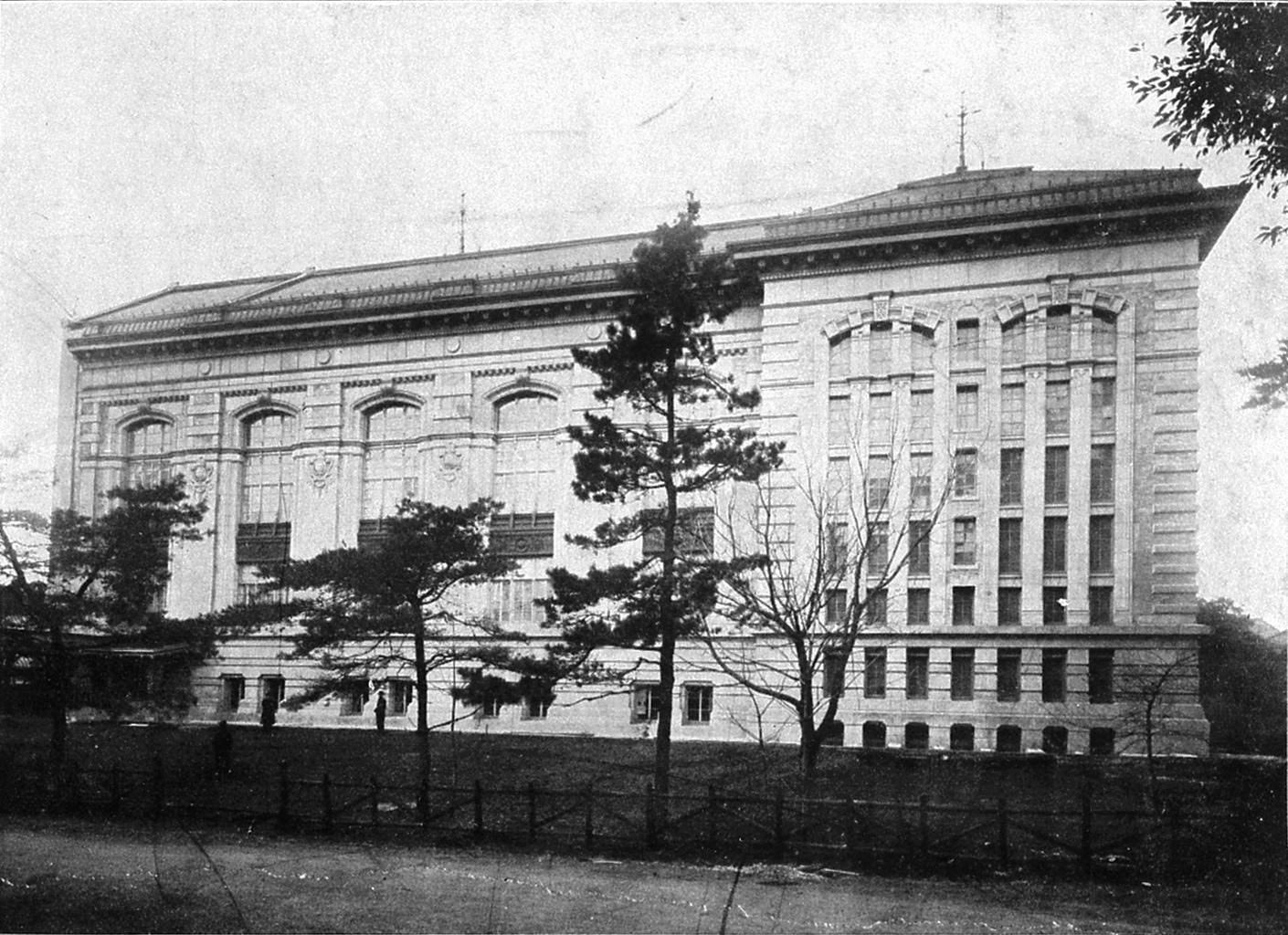Imperial Library (Japan) on:
[Wikipedia]
[Google]
[Amazon]
 The of the
The of the
 The of the
The of the Empire of Japan
The also known as the Japanese Empire or Imperial Japan, was a historical nation-state and great power that existed from the Meiji Restoration in 1868 until the enactment of the post-World War II Constitution of Japan, 1947 constitu ...
was established in 1872. Prior to World War II
World War II or the Second World War, often abbreviated as WWII or WW2, was a world war that lasted from 1939 to 1945. It involved the vast majority of the world's countries—including all of the great powers—forming two opposing ...
, it was the only national library
A national library is a library established by a government as a country's preeminent repository of information. Unlike public libraries, these rarely allow citizens to borrow books. Often, they include numerous rare, valuable, or significant wo ...
in Japan. It is one of the predecessors of the current National Diet Library.
History
The Imperial Library of Japan was established as the under the jurisdiction of theMinistry of Education
An education ministry is a national or subnational government agency politically responsible for education. Various other names are commonly used to identify such agencies, such as Ministry of Education, Department of Education, and Ministry of Pub ...
on September 3, 1872. The library was housed within the Yushima Seidō
, is a Confucian temple () in Yushima, Bunkyō, Tokyo, Japan. It was established in end of the 17th century during the Genroku era of the Edo period. Towards the late Edo period, one of the most important educational institutions of the sh ...
and combined the functions of both a library and a museum, and inherited the surviving documents held by the Tokugawa shogunate
The Tokugawa shogunate (, Japanese 徳川幕府 ''Tokugawa bakufu''), also known as the , was the military government of Japan during the Edo period from 1603 to 1868. Nussbaum, Louis-Frédéric. (2005)"''Tokugawa-jidai''"in ''Japan Encyclopedia ...
prior to the Meiji Restoration
The , referred to at the time as the , and also known as the Meiji Renovation, Revolution, Regeneration, Reform, or Renewal, was a political event that restored practical imperial rule to Japan in 1868 under Emperor Meiji. Although there were ...
. This collection evolved into the in 1875, which was made a deposit library for all publications in Japan and was renamed the Tokyo Prefectural Library in 1877 and the Tokyo Library in 1880. It was relocated to Ueno
is a district in Tokyo's Taitō Ward, best known as the home of Ueno Park. Ueno is also home to some of Tokyo's finest cultural sites, including the Tokyo National Museum, the National Museum of Western Art, and the National Museum of Na ...
in 1885.
Its first director was Tanaka Inagi (田中稲城).
In 1890, then director Tanaka Inagi visited the Library of Congress
The Library of Congress (LOC) is the research library that officially serves the United States Congress and is the ''de facto'' national library of the United States. It is the oldest federal cultural institution in the country. The library ...
in the United States and major national libraries in Europe with the aim of creating a similar facility in Japan. As a result, in April 1897, the Tokyo Library was renamed the Imperial Library, and began to assume the functions of a national library.
A new building to house the Imperial Library was completed on March 20, 1906 in Ueno Park. At the time of the transfer, the collection contained approximately 470,000 volumes. This grew to over 1 million volumes by the end of World War II. However, from the start, the library was plagued by the lack of adequate budgets, and by lack of space to accommodate all volumes necessary. The collection escaped major damage in the 1923 Great Kantō earthquake, and was evacuated to the countryside during World War II
World War II or the Second World War, often abbreviated as WWII or WW2, was a world war that lasted from 1939 to 1945. It involved the vast majority of the world's countries—including all of the great powers—forming two opposing ...
and thus escaped destruction in the Tokyo air raids.
As of 31 March 1908, it held 244,483 books, of which 194,500 were Japanese and Chinese books.
Due to censorship
Censorship is the suppression of speech, public communication, or other information. This may be done on the basis that such material is considered objectionable, harmful, sensitive, or "inconvenient". Censorship can be conducted by governments ...
requirements, the Home Ministry
An interior ministry (sometimes called a ministry of internal affairs or ministry of home affairs) is a government department that is responsible for internal affairs.
Lists of current ministries of internal affairs
Named "ministry"
* Ministr ...
operated a review office in the basement of the Imperial Library.
Following the end of World War II, the Imperial Library was renamed the National Library in December 1947, and was again renamed the National Diet Library in 1948. The former building of the Imperial Library of Japan now houses the International Library of Children's Literature.
Publications
*Teikoku Toshokan nenpō: Annual reports of the Imperial Library of Japan (formerly Tokyo Library) 1875-1948. Published by Kokuritsu Kokkai Toshokan (Japan) (1974)References
{{Authority control Defunct libraries JapanLibrary
A library is a collection of materials, books or media that are accessible for use and not just for display purposes. A library provides physical (hard copies) or digital access (soft copies) materials, and may be a physical location or a vir ...
1872 establishments in Japan
Libraries in Japan